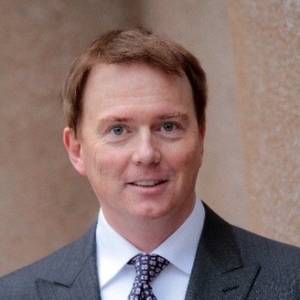Using Agile in a Dealership Environment
Our newest guest writer, Mark Fitzsimmons, makes his debut blog post here with, “Using Agile in a Dealership Environment.” Through his 20+ year career, Mark has worked with organizations ranging from start-ups to publicly traded companies to all levels of government. Mark has extensive international experience leading the development and execution of improvements to operations, quality, marketing, and customer experience strategies.
Mark is a passionate advocate of sustainable change and helping organizations create the cultural transformation needed to drive profitable customer loyalty, improved internal operations, and a differentiated customer experience.
His professional credentials include: Certified Lean Six Sigma Master Black Belt, certified in Agile development, hold PMP designation through PMI, certified in the Net Promoter System customer loyalty methodology, and hold a CCE designation from the N.A.C.M. I have an MBA (Accounting) and a BA in Organizational Psychology.
In the hyper-competitive dealership environment, creating systems that enable the business to take advantage of opportunities and protect it from the myriad of threats, requires two key pieces. The first is a disciplined approach to get to the heart of the issue and address it in the right way. And the second is ensuring there is the agility to pivot as needed due to the dynamic nature of a dealership environment.
Most dealerships today, whether they sell cars, equipment, or something else face many of the same issues:
Overcoming supply chain and inventory issues
- Lost opportunities because of delays and shortages i.e., not having the right inventory on hand leading to the inability to fulfill customer orders.
- Excess and obsolete inventory which ties up capital and takes up valuable space.
- Lower customer satisfaction as customers waits longer for their vehicle or equipment to be serviced.
Customer expectations of efficient, caring, high-quality service
- Ineffective communication between the business and its customers. For example, lacking a seamless customer experience, regardless of how they engage with the business.
- Not being treated with respect or empathy.
- Lacking real-time communications by people who know what they are doing and/or demonstrate they really care.
Dealership processes are not streamlined
-
- People are not set up to be successful because they are not trained, or equipped with the right tools, technology, resources, or equipment.
- A constraint in the workflow causing a bottleneck in the process, leading to frustrated employees and dissatisfied customers.
- Processes are not defined or are not aligned with the rest of the business i.e., there is a disconnect between people, systems, and the process.
Employee recruitment, engagement, and retention challenges
-
- New hires aren’t recruited and onboarded in a seamless and efficient way. It takes far too long to hire people, and when they start, there is too much focus on the tasks they will perform and not enough on the organizations culture i.e., it’s north star – or vision, mission, and values.
- Poor measures of success i.e., Objectives and Key Results (OKR’s) or Key Performance Indicators (KPI’s). Measures that don’t reward successful outcomes or worse yet, drive the wrong behavior.
- People don’t feel valued and/or aren’t invested in the organization; it’s just a job to them. Their knowledge, their training, their expertise…walks out the door each night.
To address the critical issues facing dealerships (or any organization) today, and in the coming years, dealerships need to tackle these issues through projects that will lead to the outcomes they hope to achieve.
The problem is, all too often organizations attempt transformations that ultimately fail or at best produce results that disappoint and create disillusionment.
According to McKinsey, 70% of all major transformation projects fail. One of the most striking characteristics of this statistic is its persistence. Moreover, in an Oxford study, 90% of projects were shown to have cost overruns. It is a bold decision-maker that shuts down a project once it has started.
For transformation projects to succeed, they need to use the right approach, the right recipe. Given the dynamic nature of dealerships, the Agile philosophy is very well suited to their environment because it allows them the flexibility to adjust and adapt (pivot) over the course of the endeavor, while still employing a disciplined, scientific approach.
Although Agile has been around for more than 20 years, it’s primarily been used in Information Technology (IT). Not because the approach is only suited for IT but rather because the drafters of the Agile Manifesto came from IT; an environment that was dynamic and constantly changing. They needed a better approach for their circumstances. In recent years, we’ve seen a number of other businesses apply the approach with great success because they too come from businesses with changing circumstances: technology, customer’s expectations, supply chain issues, employee recruitment and retention, etc.
Agile is really a philosophy. A philosophy built on four values.
The Four Values of the Agile Philosophy:
- Individuals and interactions over processes and tools
- Providing value over documentation
- Collaboration over negotiation
- Responding to change over following a plan
Although we recognize the need for those items on the right, we value those on the left more. What this means is that we believe the interactions and the relationships we create are more important than the processes or the tools we use. We don’t build houses so we can use a hammer. Yet, all too often businesses become dogmatic and very rigid about the processes or the tools they use. We can’t allow ourselves to be driven by this approach. We use those tools or those techniques or those processes that enable us to create the outcomes we’re trying to achieve.
Secondly, it means that we understand the need to create documentation for the many tasks we perform but we place emphasis on the value we deliver rather than on the documentation. Documenting an outcome that doesn’t meet the needs of the customer is of little value. It’s not what we view as success.
Thirdly, we have a mindset of collaboration; with our customers, with our vendors, with those we partner with in the course of our daily activities. This doesn’t mean we don’t negotiate when we need to, but rather we value having a mindset of collaboration over one that is adversarial and where we negotiate, where there is a winner and a loser. Over the long run, this seldom works out or creates healthy relationships.
Finally, we recognize and accept the need to plan. There’s a lot of truth to the old adage that if we fail to plan, we’re planning to fail. Of course, we plan, but we recognize that in a dynamic environment where circumstances can and do change, often with little warning, we adjust and refine those plans to meet the current needs. In too many transformation projects, we stick to the plan or are too slow to respond to changing circumstances.
In an Agile transformation, project teams work iteratively and incrementally towards the desired solution. More specifically, cross-functional teams work on the issues or challenges through a series of sprints or time-boxed periods to ensure the quality of products or services and allowing the team to adapt to changes along the way. It embeds collaboration between the team and its customers throughout the course of the project or transformation.
It’s a much safer approach because it allows teams to respond to any changes over the course of the project and ensures the transformation remains aligned to the goals of the organization.




